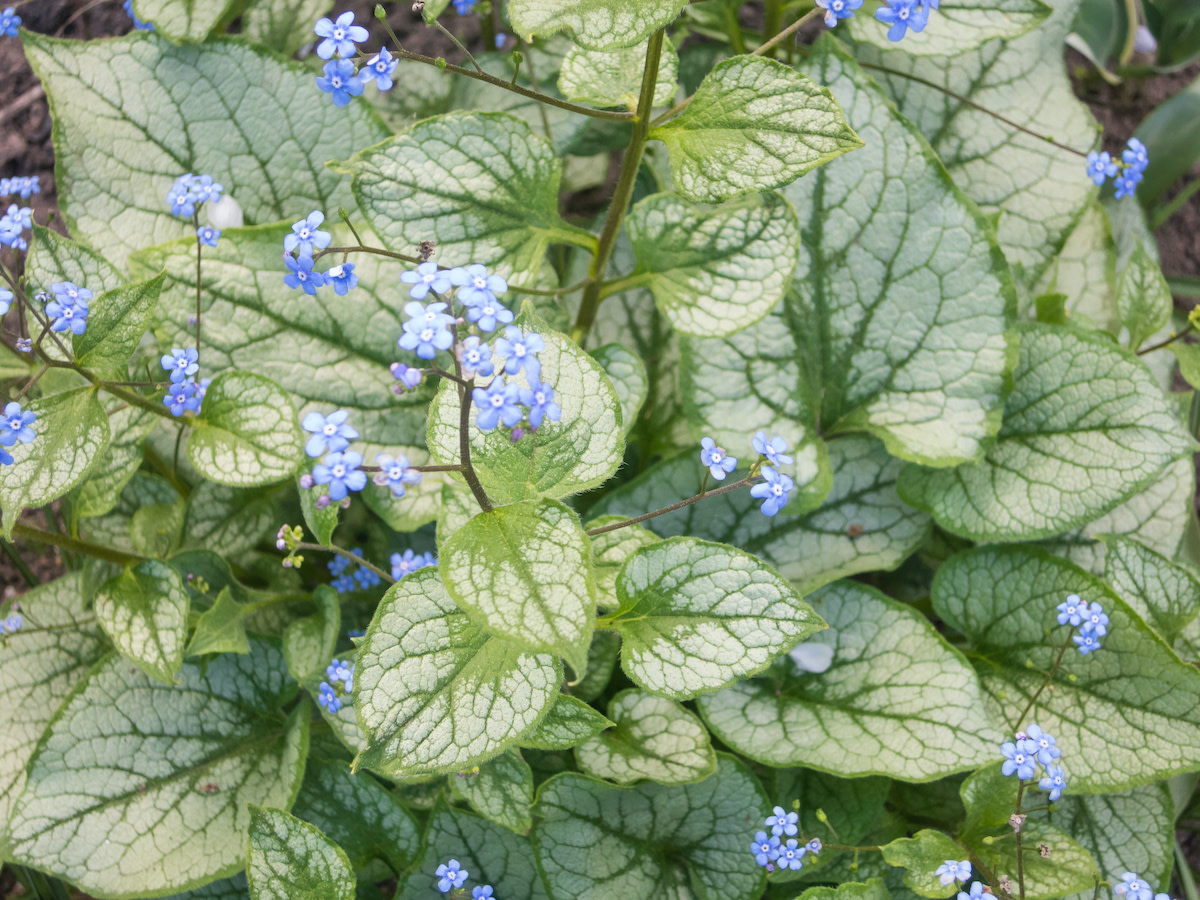Brunnera Plant Guide: How to Grow and Care for Brunnera
Written by MasterClass
Last updated: Jul 22, 2021 • 4 min read
Brunnera plants appear similar to the distantly related forget-me-nots, due to the petite, blue blooms the two types of plants share. Brunnera’s heart-shaped leaves can come in a range of colors, including combinations of green, gray, silver, or cream.
Learn From the Best
What Is a Brunnera Plant?
A brunnera plant (belonging to the Brunnera genus in the Boraginaceae family) is also called a false forget-me-not due to its flowers resembling the blue flower color of a true forget-me-not. The plant has petite, light blue blooms and glossy, heart-shaped leaves that are either green, gray, silver, or white.
These low-maintenance plants are herbaceous perennials, meaning they can live for many years under normal growing conditions. The plants form tidy clumps and can reach up to 18 inches in height, with rough, hairy leaves. Brunnera, which are native to Eastern European and North West Asian woodlands, do well in USDA Hardiness Zones 3 through 7 and are typically used as groundcover in the shade.
One of the most well-known brunnera species is Brunnera macrophylla, also known by its common name, Siberian bugloss, or as large-leaf brunnera or heartleaf brunnera. Their small blue flowers have a bloom time of about eight to 10 weeks starting around mid or late spring.
6 Popular Brunnera Cultivars
Here are six cultivars of the common brunnera species B. macrophylla that all possess blue flowers and various colors of foliage:
- 1. ‘Dawson’s White’: The foliage on this cultivar is patterned green with wide pale cream to white edges on every leaf.
- 2. ‘Diane's Gold’: The heart-shaped leaves take on a golden-chartreuse color in this cultivar.
- 3. ‘Emerald Mist’: The leaves here feature silver barring extending inward from the edge of the leaf, creating a silver collar around the edge of the leaf. There is also a light dusting of silver over the entire surface of the leaf.
- 4. ‘Hadspen Cream’: This cultivar’s dark green leaves are characterized by the cream-colored edges of each leaf.
- 5. ‘Jack Frost’: This cultivar gets its name from its silver-dusted leaves with dark green veining.
- 6. ‘Langtrees’: The green foliage of this cultivar has symmetrical pale green to cream patterned markings.
4 Tips for Growing and Planting Brunnera
Brunneras are hardy perennials that thrive easily if you provide them with the right conditions. Here are five tips for brunnera growers:
- 1. Consider your climate. If your area is in a warmer area, opt for a cultivar with silver leaves—‘Jack Frost,’ ‘King’s Ransom,’ ‘Langtrees,’ ‘Looking Glass,’ ‘Sea Heart,’ and ‘Silver Heart’ all do better than other brunnera plants when grown in heat and humidity.
- 2. Sow the plants inside first. Estimate when there will no longer be a chance for frost in your area. Then, count backward 10 weeks on the calendar to find your sow date. On that day, mix your seeds in a moist growing medium, place the mixture in a freezer bag, and refrigerate it for four weeks. Germination time should be about one to three months. Then you’ll transplant them outdoors either after the last frost, in early spring, or in the fall, in time for the growing season. Space them 10–20 inches apart.
- 3. Provide partial shade. While brunnera can thrive in full sunlight, part shade, or full shade, planting them so they can avoid the hot afternoon sun (especially if you’re in a particularly hot USDA Hardiness Zone) is key to their good health. The leaves on brunneras—especially variegated leaves (those with different colors)—can be sensitive to full sunlight and can scorch or burn.
- 4. Use rich, moist soil. These plants struggle in dry, nutrient-deficient soil. Use soil with a pH level of 5.5–7.0 and water the plants regularly. It’s important that the area drains well so that the soil isn’t too soggy.
4 Tips for Caring for Brunnera
Brunnera plants are easy to care for, whether they’re filling out a woodland garden or a ground cover under shrubs. Keep these tips in mind to maintain healthy plants.
- 1. Divide the plants occasionally. Dividing your plants every four to six years will keep your plants tidy and encourage renewed leaf growth or sometimes even a second bloom.
- 2. Mind the self-seeding. Your brunnera blooms may self-seed and sprout from seeds dropped the previous year. You can replant those small seedlings into areas where you would like more brunnera to grow. If you’re interested in this method of propagation, keep in mind that cultivars will not be identical after self-seeding; the seedlings will be green-leaved versions rather than possess the colorful foliage of the cultivar.
- 3. Propagate from cuttings. As an alternative to self-seeding, you may want to propagate your plant from root cuttings (best done during the winter) or by division (best done in the spring).
- 4. Deadhead regularly. Since brunnera self-seed, you may find them popping up in other areas of your garden, potentially overwhelming your cultivar with versions with green leaves. Self-seeding can be avoided by deadheading, or removing the faded or dead flowers from the plant, semi-regularly.
Learn More
Grow your own garden with Ron Finley, the self-described "Gangster Gardener." Get the MasterClass Annual Membership and learn how to cultivate fresh herbs and vegetables, keep your house plants alive, and use compost to make your community—and the world—a better place.
